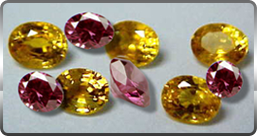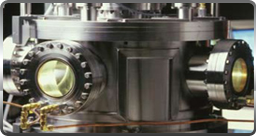SCIO Diamond Technology began with Dr. Robert Linares, and his vision of growing diamond for semiconductor applications. He had previously pioneered the growth and development of Gallium Arsenide now found in every cell phone manufactured in the world today. SCIO employs a chemical deposition process to produce high-quality, single-crystal diamonds. Our diamond materials are grown in a controlled laboratory setting. As such, we refer to our laboratory grown diamonds as “cultured” diamonds.
SCIO Diamond’s goal is developing and perfecting two advanced semiconductor materials, gallium nitride (now used in light emitting diodes) and diamond. From 2000 onward, SCIO Diamond focused solely on diamond and developing a process by which large, single- crystal diamond could be grown in a controlled laboratory environment. SCIO Diamond developed the Diamond Technology to produce large, single-crystal diamonds in a controlled process reactor environment. The core Diamond Technology that will be acquired by the Company is based on a chemical vapor deposition (“CVD”) diamond growth system. SCIO Diamond has thirteen patents (10 US [9 issued; 1 claim allowed]; 1 Australian; 2 China) related to its technology with approximately forty (40) domestic and foreign patents pending.
Prior to the global economic crisis which began in late 2008, W.H. Ireland, Ltd. had stated that from a macro-economic fundamentals perspective “the diamond-mining sector is the most positive it has been for more than 30 years.”
Indeed, during the first three quarters of 2008 the industry was experiencing very strong demand. De Beers, who controls approximately forty percent (40%) of the world’s diamonds by value, stated in September 2008 that it “could not get diamonds out of the ground fast enough to meet supply.” Through the first three quarters of 2008 rough diamond prices increased some twenty percent (20%), but retreated significantly in Q4 2008 through 1H 2009. De Beers achieved record sales through the first nine months of 2008 before fourth quarter sales slowed significantly as a result of the onset of the global economic downturn and the subsequent liquidity squeeze in the key global cutting centers. Notwithstanding reduced fourth quarter demand, De Beers’s rough prices increased fourteen percent (14%) in 2008. As a result of the economic climate, demand for rough diamonds declined an average of 30-40% in 2009 from previous 2008 highs. In response, many diamond mining operations in 2009 were and continue to be suspended if not altogether shut down and inventories were also reduced. In addition, industry investment in exploration and development decreased dramatically in 2009 (e.g., De Beers exploration budget of c. $94 million in 2008 was reduced to c. $44 million in 2009). Notwithstanding the effects of the economic crisis, the industry predicted a return to strong long-term fundamentals as recovery occurred. The aforementioned actions to reduce supply and exploration reductions have created inevitable upward pressure on pricing as the industry is emerging from the recent economic crisis.


 N/A
N/A 0.00
0.00 +11.01
+11.01 +1.55
+1.55 +0.20
+0.20 N/A
N/A

